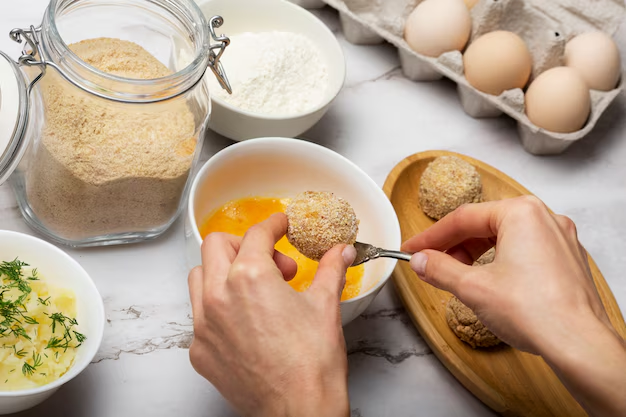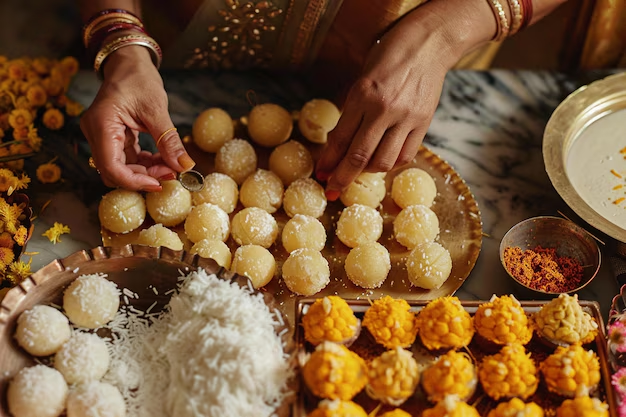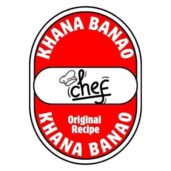Introduction
Is vada pav made of Maida:- Vada Pav, often dubbed Mumbai’s beloved street food, consists of a spicy potato fritter (vada) sandwiched between a soft bun (pav). This popular snack is enjoyed across India, particularly in Mumbai, where it’s a staple for many. The vada is made by coating a seasoned potato mixture in gram flour and deep-frying it, while the pav is typically a soft, round bread roll. Common questions about Vada Pav often revolve around its ingredients, particularly the use of maida (refined flour) in the pav and whether it affects the dish’s authenticity and healthiness. Understanding these components can help clarify its preparation and variations.
What is Maida?
Maida, a finely milled, refined flour, is a staple in Indian cuisine. Known for its white color and smooth texture, it’s made from wheat grains with the bran and germ removed. Maida is often used to create soft and airy baked goods, such as breads, pastries, and biscuits. In Indian cuisine, it is a key ingredient in various dishes, including parathas, puris, and sweets like jalebi and gulab jamun. Its fine consistency and lightness make it ideal for achieving a desirable texture in these foods. However, its refinement process removes some nutritional value compared to whole wheat flour.

Vada Pav Ingredients
Traditional vada ingredients include boiled potatoes, which are mashed and seasoned with spices such as turmeric, cumin, mustard seeds, and green chilies. This spiced potato mixture is then coated in a batter made from gram flour (besan) and deep-fried until crispy. For the pav (bread), ingredients typically consist of all-purpose flour (maida), yeast, sugar, salt, and water. The dough is kneaded and allowed to rise before being shaped into soft, fluffy rolls. Both components come together to create the iconic Vada Pav, with the vada providing a spicy crunch and the pav offering a soft, complementing base.
Does Vada Pav Use Maida?
Is vada pav made of Maida:- In a typical Vada Pav, the vada is made from mashed potatoes mixed with spices like turmeric, cumin, and green chilies, and then coated in a gram flour (besan) batter before frying. This creates a crispy, flavorful fritter. The pav, or bread roll, traditionally uses maida (all-purpose flour), yeast, sugar, salt, and water, resulting in a soft, airy bun. Maida is favored for its ability to produce a light, fluffy texture in baked goods, but it’s less nutritious than whole wheat flour. In traditional recipes, maida is commonly used to achieve the desired softness and consistency, though healthier alternatives are gaining popularity.

Alternative Ingredients
Using whole wheat flour or other flours in pav can offer healthier alternatives to traditional maida. Whole wheat flour adds fiber, vitamins, and minerals, enhancing the nutritional profile of the bread. It results in a denser texture and a slightly nutty flavor compared to the soft, airy quality of maida pav. Other flours, such as multigrain or oat flour, can also be used, each imparting unique flavors and textures. While these alternatives improve health benefits, they may alter the traditional taste and consistency of pav. Experimenting with these flours allows for a balance between health and authenticity in Vada Pav.
Regional Variations
Regional variations of Vada Pav can lead to diverse ingredient choices. In Mumbai, the traditional recipe often uses maida for the pav, resulting in a soft, fluffy bread roll. In contrast, regions like Gujarat might use whole wheat flour or a mix of flours for a denser, healthier pav. In some parts of South India, variations may include different spices or additions like curry leaves in the vada. The use of alternative flours, such as millet or ragi, reflects a growing trend towards healthier options, offering variations in texture and flavor while catering to local preferences and dietary needs.
Health Considerations

Maida, or refined flour, is low in nutrients compared to whole grains. Its refinement process removes bran and germ, stripping away fiber, vitamins, and minerals. Consuming maida can contribute to higher calorie intake and lower nutritional value, potentially impacting health negatively over time. In contrast, using alternatives like whole wheat flour, millet, or oat flour can enhance the nutritional profile of foods. These alternatives offer increased fiber, essential nutrients, and a lower glycemic index, which can improve digestion, reduce the risk of chronic diseases, and support overall health. Switching to these healthier options benefits both taste and nutritional value.
Can I eat vada pav once a week?
Eating Vada Pav once a week can be part of a balanced diet if consumed in moderation. While Vada Pav is delicious, it is typically deep-fried and made with maida, which can be less nutritious. To make it healthier, consider preparing it with whole wheat pav and baking the vada instead of frying. Pairing it with fresh vegetables or a salad can also enhance its nutritional value. As with any indulgent food, moderation is key, and balancing it with a diet rich in fruits, vegetables, lean proteins, and whole grains can help maintain overall health.
Is vada junk food or not?
Vada Pav is often considered junk food due to its preparation method and ingredients. The vada is deep-fried, which adds unhealthy fats, and the pav is typically made from maida, a refined flour low in nutritional value. This combination can lead to higher calorie intake with minimal nutrients. However, its classification as junk food depends on how it’s prepared and consumed. Using whole wheat pav, baking the vada instead of frying, and incorporating fresh vegetables can make it a healthier option. While traditionally seen as junk food, healthier variations can transform Vada Pav into a more nutritious snack.
Conclusion
In summary, Vada Pav, a popular street food, traditionally uses maida for the pav, resulting in a soft, fluffy texture. The vada, a spiced potato fritter, is typically coated in gram flour before frying. While maida provides the desired consistency and taste, it lacks nutritional value compared to whole wheat and other alternative flours. Using alternatives like whole wheat or multigrain flours can enhance the nutritional profile of the pav, though they may alter the traditional texture and flavor. Ultimately, while maida remains a staple in traditional recipes, exploring healthier options can offer both taste and health benefits.
